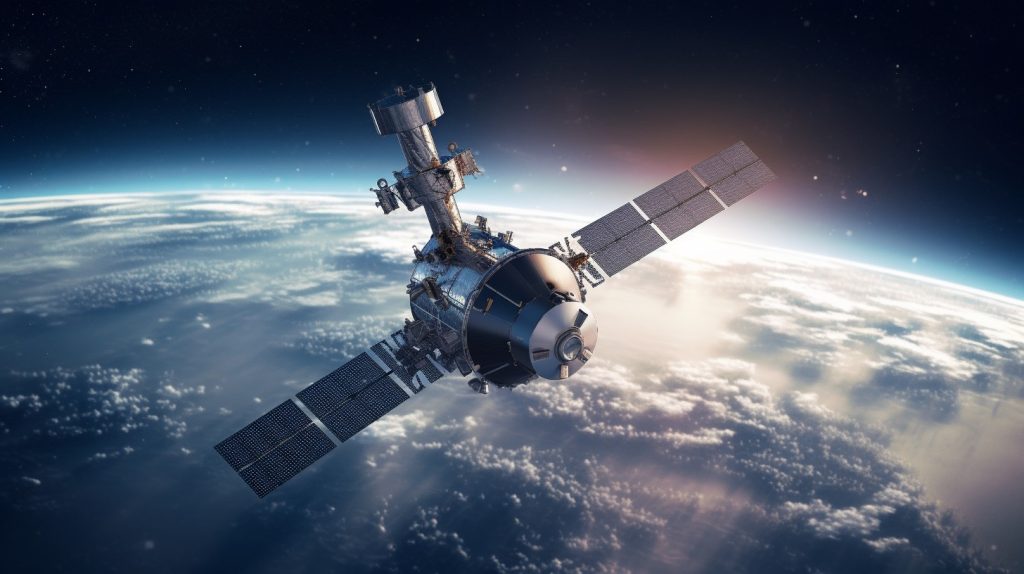Autonomous Spacecraft Navigation: How AI Revolutionizes Deep Space Exploration
Introduction
The exploration of deep space is an endeavor that requires precision, accuracy, and adaptability. One of the critical challenges in deep space missions is spacecraft navigation. Unlike missions in Earth’s vicinity, where real-time communication can be maintained, deep space missions often involve significant communication delays, making autonomous spacecraft navigation a necessity. Artificial Intelligence (AI) has emerged as a crucial tool in addressing these challenges, enabling spacecraft to navigate through the vastness of space with unprecedented accuracy and efficiency. This article delves into the role of AI in autonomous spacecraft navigation, highlighting its applications, benefits, and future prospects.
Understanding Autonomous Spacecraft Navigation
The Significance of Autonomous Navigation
In deep space, the time it takes for a signal to travel between Earth and a spacecraft can be substantial, ranging from several minutes to hours. This communication lag makes real-time, manual navigation impractical. Autonomous navigation refers to a spacecraft’s ability to determine its position, velocity, and orientation independently, using onboard sensors and computational algorithms. It allows spacecraft to adapt to unexpected circumstances and safely navigate without constant human intervention.
The Challenges of Deep Space Navigation
Deep space navigation presents several unique challenges:
- Extreme Distances: Spacecraft in deep space can be millions or even billions of kilometers away from Earth. This vast distance requires high-precision navigation techniques to ensure a spacecraft reaches its intended target.
- Limited Resources: Spacecraft carry a limited amount of fuel and power. Efficient navigation is crucial to extend mission lifetimes and achieve mission objectives with available resources.
- Unpredictable Environments: Deep space is filled with cosmic debris, radiation, and gravitational anomalies. Autonomous navigation systems must adapt to these unpredictable conditions to ensure mission success.
AI in Deep Space Navigation
The Role of AI
AI plays a pivotal role in addressing the challenges of deep space navigation. By leveraging machine learning algorithms, computer vision, and advanced sensor technologies, AI-enabled systems enhance spacecraft autonomy, enabling them to make real-time decisions based on their surroundings.
Key AI Applications
Trajectory Planning and Optimization
AI algorithms analyze complex gravitational interactions and planetary dynamics to calculate optimal trajectories for spacecraft. They can adjust paths in real-time to avoid obstacles or take advantage of gravitational assists, minimizing fuel consumption.
Sensor Fusion
Spacecraft rely on various sensors, including star trackers, accelerometers, and cameras, to gather data about their environment. AI techniques fuse data from these sensors to generate precise position and orientation estimates.
Autonomous Hazard Detection
AI-powered hazard detection systems identify potential risks, such as space debris or hazardous terrain on celestial bodies. These systems can trigger course corrections or other safety measures to protect the spacecraft.
Autonomous Maneuvering
AI algorithms control spacecraft propulsion systems, executing precise maneuvers to reach designated waypoints or respond to unexpected events.
Anomaly Detection and Response
AI continuously monitors spacecraft health and performance, identifying anomalies that may indicate technical issues. When anomalies are detected, AI can initiate troubleshooting procedures or switch to backup systems.
Benefits of AI in Deep Space Navigation
Improved Accuracy
AI systems can make rapid, high-precision calculations, leading to more accurate navigation and increased mission success rates.
Reduced Communication Dependency
Autonomous navigation reduces the need for constant communication with Earth, allowing missions to operate effectively even during long communication blackout periods.
Enhanced Adaptability
AI-equipped spacecraft can adapt to unexpected challenges, such as encountering uncharted obstacles or adjusting trajectories to capitalize on new opportunities.
Extended Mission Lifetimes
Efficient navigation and resource management enabled by AI can extend the operational lifespan of deep space missions, allowing for more data collection and scientific discoveries.
Case Studies: AI in Action
Voyager 2
The Voyager 2 spacecraft, launched in 1977, is a prime example of AI-enabled deep space navigation. Despite being over 14 billion kilometers away from Earth, Voyager 2 continues to communicate with NASA and make scientific observations. AI algorithms have been crucial in adjusting its trajectory and optimizing data collection throughout its extended mission.
Mars Rovers
Mars rovers, such as Curiosity and Perseverance, rely on AI for autonomous navigation on the Martian surface. These rovers use computer vision and terrain analysis to plan safe routes, avoid obstacles, and reach their scientific targets.
Future Prospects
Advancements in AI
As AI technologies continue to advance, future spacecraft will benefit from even more sophisticated navigation capabilities. Machine learning algorithms will become more adept at handling complex environments and optimizing mission objectives.
Increased Autonomy
Space agencies are working on developing fully autonomous spacecraft that can make critical decisions independently, reducing the need for constant oversight from Earth.
Human-Machine Collaboration
AI will enable deeper collaboration between humans and spacecraft, allowing for more interactive and adaptive mission planning.
Conclusion
The use of AI in autonomous spacecraft navigation has revolutionized deep space exploration. By addressing the challenges of extreme distances, limited resources, and unpredictable environments, AI-equipped spacecraft can achieve higher accuracy, reduce communication dependency, and extend mission lifetimes. As AI technologies continue to evolve, the future of deep space exploration holds exciting possibilities, with more autonomous, adaptable, and collaborative spacecraft paving the way for new discoveries in the cosmos.

